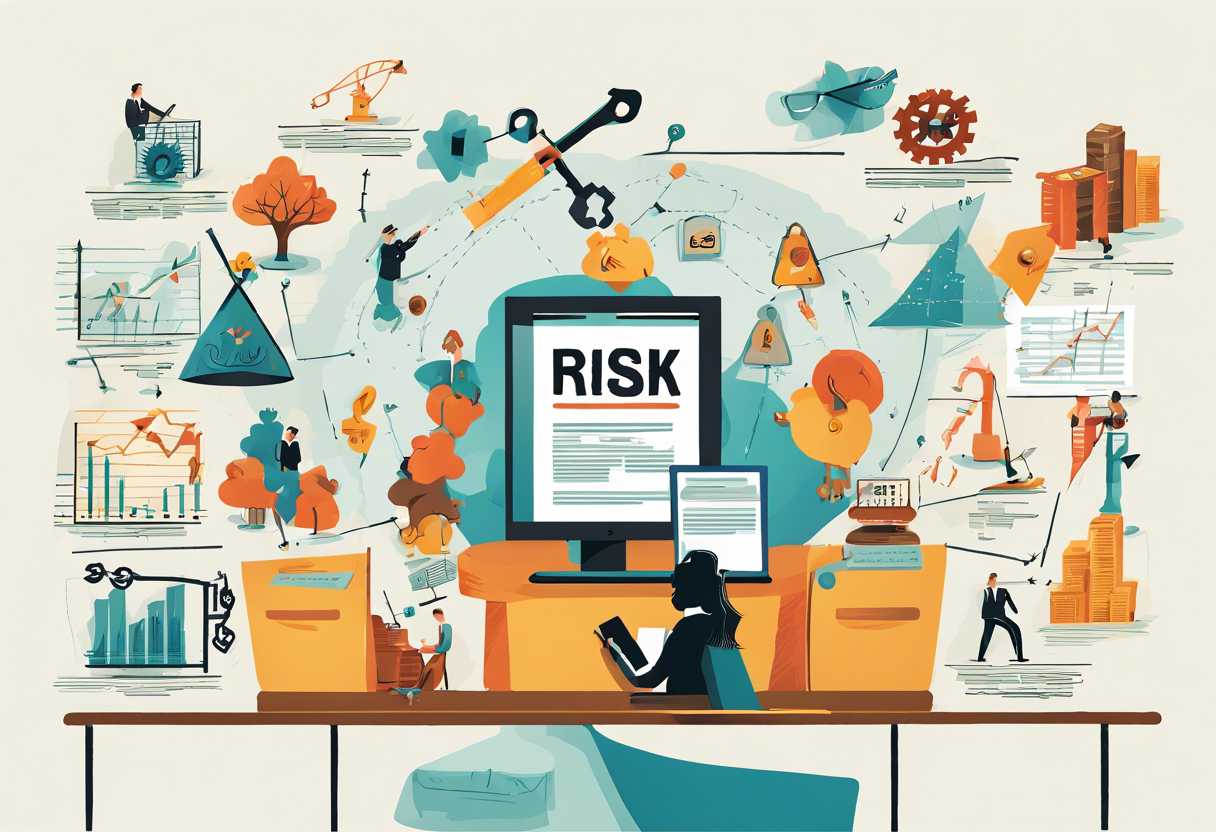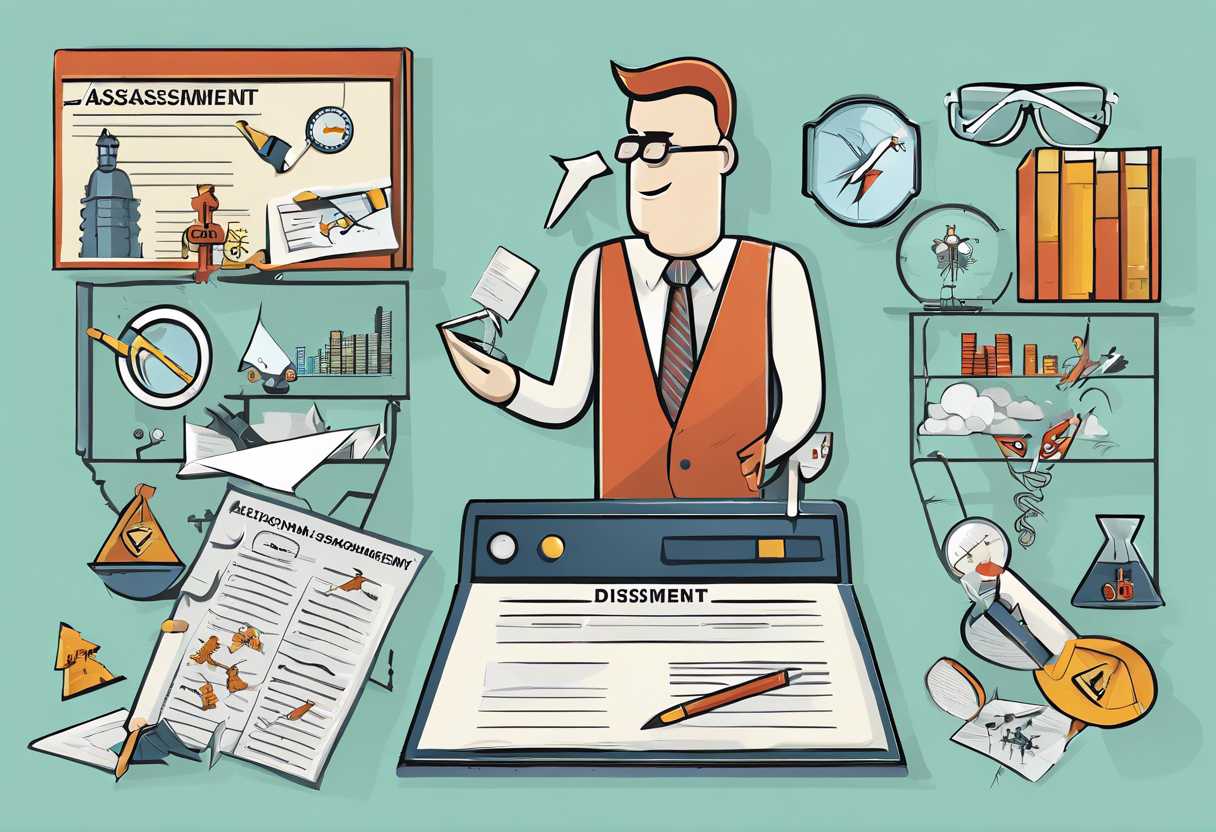When it comes to navigating the complex landscape of business risks, understanding the difference between risk assessment and risk management is crucial. While risk assessment involves identifying potential risks and evaluating their potential impact, risk management focuses on developing strategies to mitigate and control these risks. In this blog post, we will delve into the importance of effective risk assessment in business, key strategies for successful risk management, and how to integrate risk assessment and risk management for optimal results. We will also explore best practices for implementing risk assessment and risk management processes, providing valuable insights for businesses looking to enhance their risk management practices. Join us as we explore the critical nuances of risk assessment and risk management, and how they can be leveraged to drive success in today’s dynamic business environment.
Understanding the Difference: Risk Assessment vs. Risk Management
The Importance of Risk Assessment
Risk assessment is the process of identifying, analyzing, and evaluating potential risks that could affect an organization’s ability to achieve its objectives. It involves identifying potential hazards, assessing the likelihood of those hazards occurring, and evaluating the potential impact on the organization. This process is crucial for organizations to understand the risks they face and to develop strategies to mitigate those risks.
The Role of Risk Management
Risk management, on the other hand, is the process of implementing strategies to mitigate, monitor, and control the risks identified through the risk assessment process. It involves developing and implementing policies, procedures, and controls to minimize the impact of potential risks on the organization. Risk management is essential for organizations to proactively address potential threats and to ensure the continuity of their operations.
Key Differences
One key difference between risk assessment and risk management is that risk assessment focuses on identifying and evaluating potential risks, while risk management focuses on implementing strategies to address those risks. Another difference is that risk assessment is a more analytical and evaluative process, while risk management is a more proactive and strategic process.
It’s important for organizations to understand the distinction between risk assessment and risk management and to recognize that both processes are essential for effective risk mitigation and organizational resilience.

The Importance of Effective Risk Assessment in Business
Identifying Potential Risks
Effective risk assessment in business involves identifying potential risks that could impact the organization’s operations, finances, or reputation. This includes conducting a thorough analysis of internal and external factors that could pose a threat to the business, such as market volatility, regulatory changes, or cybersecurity threats. By identifying these risks, businesses can proactively implement strategies to mitigate their impact and protect their interests.
Minimizing Financial Losses
One of the key benefits of effective risk assessment in business is the ability to minimize financial losses. By identifying potential risks and their potential impact on the organization, businesses can take proactive measures to reduce the likelihood of financial losses. This may include implementing risk management strategies, such as diversifying investments, purchasing insurance, or establishing contingency plans. By minimizing financial losses, businesses can protect their bottom line and ensure long-term sustainability.
Enhancing Decision-Making
Effective risk assessment in business can also enhance decision-making processes. By understanding the potential risks associated with a particular course of action, business leaders can make more informed decisions that take into account potential challenges and obstacles. This can help businesses avoid costly mistakes and improve their overall performance. Additionally, by having a clear understanding of potential risks, businesses can develop more effective risk management strategies that align with their organizational goals and objectives.

Key Strategies for Successful Risk Management
Identifying and Assessing Risks
One of the key strategies for successful risk management is the ability to identify and assess potential risks. This involves conducting a thorough analysis of the internal and external factors that could impact the organization’s objectives. By identifying and assessing risks, businesses can develop effective strategies to mitigate potential threats and capitalize on opportunities.
Developing a Risk Management Plan
Once risks have been identified and assessed, it is essential to develop a comprehensive risk management plan. This plan should outline the specific strategies and tactics that will be used to address and mitigate potential risks. It should also include a clear framework for monitoring and evaluating the effectiveness of the risk management strategies.
Implementing Risk Mitigation Strategies
After developing a risk management plan, the next step is to implement risk mitigation strategies. This may involve implementing new policies and procedures, investing in new technologies, or making changes to the organization’s operations. By proactively addressing potential risks, businesses can minimize the impact of potential threats and improve their overall resilience.
Integrating Risk Assessment and Risk Management for Optimal Results
The Importance of Integrating Risk Assessment and Risk Management
Integrating risk assessment and risk management is crucial for organizations to effectively identify, analyze, and mitigate potential risks. By combining these two processes, businesses can gain a comprehensive understanding of their risk landscape and develop strategies to minimize the impact of potential threats. This integrated approach allows for a more proactive and holistic risk management strategy, ultimately leading to optimal results.
Benefits of Integration
Integrating risk assessment and risk management offers several benefits, including improved decision-making, enhanced resource allocation, and better alignment of risk management efforts with business objectives. By integrating these processes, organizations can streamline their risk management efforts and ensure that resources are allocated to the most critical areas. This approach also enables businesses to make more informed decisions by considering both the likelihood and potential impact of risks, leading to more effective risk mitigation strategies.
Best Practices for Integration
When integrating risk assessment and risk management, organizations should follow best practices to ensure optimal results. This includes establishing clear communication channels between risk assessment and risk management teams, leveraging technology to streamline the process, and regularly reviewing and updating risk assessments and mitigation strategies. Additionally, organizations should consider implementing a risk management framework that aligns with industry best practices and regulatory requirements to ensure comprehensive coverage of potential risks.
Best Practices for Implementing Risk Assessment and Risk Management Processes
Understanding the Importance of Risk Assessment
Risk assessment is a crucial step in the risk management process as it helps organizations identify potential risks and their potential impact on the business. By conducting a thorough risk assessment, organizations can proactively identify and mitigate potential threats, ultimately minimizing the impact on their operations and bottom line. It is essential to understand the significance of risk assessment and its role in developing an effective risk management strategy.
Establishing Clear Objectives and Criteria
When implementing risk assessment and risk management processes, it is essential to establish clear objectives and criteria. This involves defining the goals of the risk assessment, identifying the specific risks to be assessed, and establishing the criteria for evaluating and prioritizing risks. By setting clear objectives and criteria, organizations can ensure that the risk assessment process is focused and effective, ultimately leading to better risk management outcomes.
Utilizing Risk Assessment Tools and Methodologies
There are various tools and methodologies available for conducting risk assessments, such as risk matrices, risk registers, and scenario analysis. It is important for organizations to utilize these tools and methodologies to facilitate the risk assessment process. By leveraging the right tools and methodologies, organizations can gain a comprehensive understanding of their risks and make informed decisions about risk management strategies. Additionally, utilizing these tools can help streamline the risk assessment process and ensure that all relevant risks are adequately addressed.
Conclusion
Understanding the difference between risk assessment and risk management is crucial for businesses to effectively mitigate potential risks and ensure long-term success. While risk assessment focuses on identifying and evaluating potential risks, risk management involves implementing strategies to minimize or eliminate these risks.
The importance of effective risk assessment cannot be overstated, as it provides businesses with valuable insights into potential threats and vulnerabilities. By understanding these risks, organizations can proactively develop strategies to address them, ultimately safeguarding their operations and reputation.
Key strategies for successful risk management include establishing clear risk management processes, assigning responsibilities, and regularly monitoring and reviewing risk mitigation efforts. By integrating risk assessment and risk management, businesses can optimize their risk management efforts and ensure a comprehensive approach to risk mitigation.
Implementing best practices for risk assessment and risk management processes is essential for businesses to effectively identify, evaluate, and address potential risks. This includes leveraging technology, fostering a risk-aware culture, and continuously adapting strategies to evolving risks and market conditions.
In conclusion, understanding the difference between risk assessment and risk management, and integrating these processes, is essential for businesses to effectively identify, evaluate, and address potential risks. By implementing best practices and strategies, organizations can proactively manage risks and ensure long-term success. It is crucial for businesses to prioritize risk assessment and risk management to safeguard their operations and reputation in an increasingly complex and dynamic business environment.

